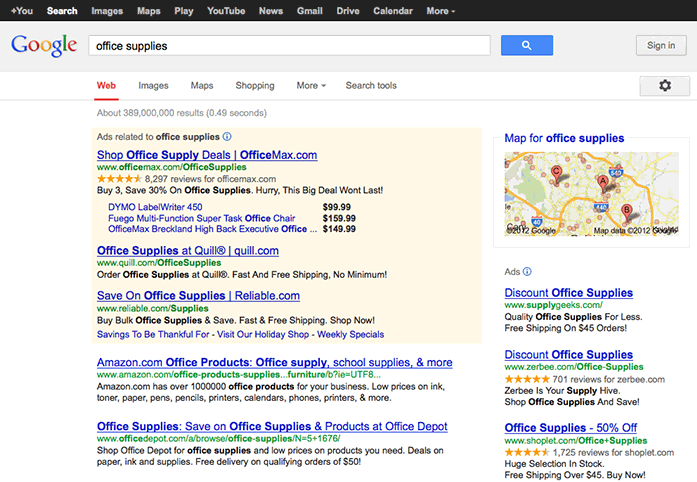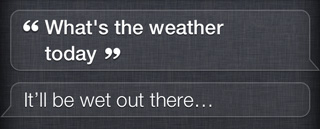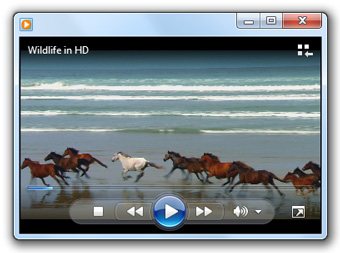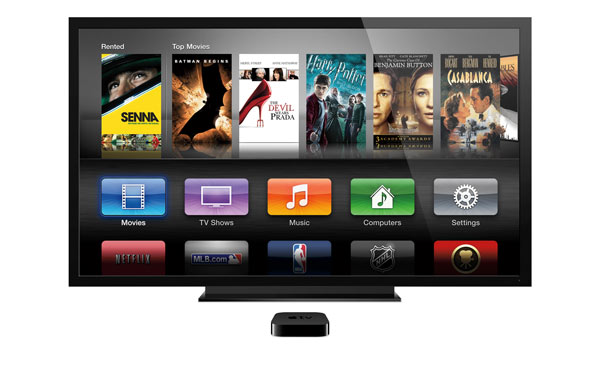
Internet 101
How is the Internet Used?
Introduction

As the Internet has grown, it has developed into a multi-faceted tool with a vast range of uses. It's now easy to keep in touch with friends, publish your own articles, or even watch your favorite TV shows using the Internet.
In this lesson, we'll talk about some of the ways the Internet is used today, including blogs, social networking, instant messaging, VoIP, and media.
Finding information online
The most common way to find information online is with a search engine. All you have to do is type in a few words, and the search engine will give you a list of results you can click on. There are many different search engines you can use, but Google is the most popular one.
 Using Google to search the Web
Using Google to search the WebIntelligent personal assistants
 Asking Siri a question
Asking Siri a questionIf you're using a mobile device, there are some situations when it's not convenient to type a search into a search engine. Instead, you can simply talk to your device's intelligent personal assistant. One example is Siri, which comes pre-installed on all new iPhones.
With Siri, you can ask a question like "What's the weather today?" or "Are there any Thai restaurants nearby?" Siri will then try to give you an answer. You can also use Siri to do other things on your device, like setting up reminders. For example, you could say, "Remind me to go to the dentist on Thursday."
For more information, visit Apple's Learn more about Siri page.
Using the Internet to communicate
The Internet isn't just about finding information. It's also about connecting with friends, family, and people you've never met before. Today, there are many different ways to communicate online, including social networking, chat, VoIP, and blogging.
Social networking
 A Facebook newsfeed
A Facebook newsfeedSocial networking has become one of the main ways people keep in touch. Below are a few of the most popular social networking sites:
- Facebook is used by about 1 billion people. If you have family or friends who live far away, you can use Facebook to keep up with their lives. You can also share things you've found online that interest you.
- Twitter lets you share brief messages (or "tweets") with the entire world or with just your circle of friends. By following people with similar interests, you can discover new things you wouldn't have found otherwise.
- LinkedIn is a site you can use for business networking. It allows you to connect with other people in your field and discover new job opportunities.
Chat and instant messaging
Chat and instant messaging programs allow you to have conversations with your friends or just write them a quick note. Two examples are Yahoo! Messenger and Microsoft Messenger. Some sites, such as Gmail and Facebook, allow you to chat within your browser.
 A conversation using Gmail's built-in chat
A conversation using Gmail's built-in chatVoIP
VoIP (Voice over Internet Protocol), allows you to have telephone service through your Internet connection. Some services also let you do video conferencing, such as Skype and Facebook Video Calling. Many of these services are free or very inexpensive, and some people use them as a replacement for a landline or simply to save minutes on their mobile phones.
 Using a video conferencing program
Using a video conferencing programBlogs
Today, the average user has the ability to shape the Web by adding to it. If you have knowledge or interests you're passionate about, you can create your own blog and share your thoughts with the world.
There are many sites like blogger.com and wordpress.com that let you create a blog for free. You don't need any web design experience—most of the technical stuff has already been created for you, and you can choose a predesigned template that has the look and feel that you want.
 An example of a blog
An example of a blogTo learn more about communicating online, check out our Beyond Email and Blog Basics tutorials.
Media on the Internet
TV, radio, and the Internet used to be completely separate things, but that's no longer true with today's technology. You can now watch TV shows on your computer, and you can connect to the Internet on many TVs and DVD/Blu-ray players. In addition, radio stations from around the world allow you to listen online, and many online-only radio stations now exist.
 iTunes radio
iTunes radioStreaming media
TV and radio on the Internet are examples of streaming media, which means the media downloads while it's playing so you don't have to wait for it to download first.
Not all media is streaming. If you've ever bought music via the iTunes Store, you probably had to wait for it to download before you could listen to it.
Media players and embedded media
Media is often embedded in a webpage, which means it plays within the web browser. Other times, you'll use a separate program called a media player to play it. Examples include Windows Media Player and iTunes. An iPod contains built-in media player software that can play various types of files.
 Windows Media Player
Windows Media PlayerOnline media on your TV
You can now access online TV shows, movies, and music on your TV. Many newer TVs are able to connect to an existing Internet connection. If yours doesn't have this feature built into it, you can buy a separate digital media receiver, which is a small device that connects to your TV. Apple TV and Roku are two examples of digital media receivers. Many game consoles, such as the Xbox 360 and PlayStation 3, can also be used to access online content.
 Browsing movies with Apple TV
Browsing movies with Apple TVUsing the Internet in the future
The Internet is always changing, and the ways in which we access it will also continue to change. Technology will continue to become more common and integrated into our everyday lives. In addition, we'll see many technologies and devices in the future that will allow us to use the Internet in new and exciting ways.


